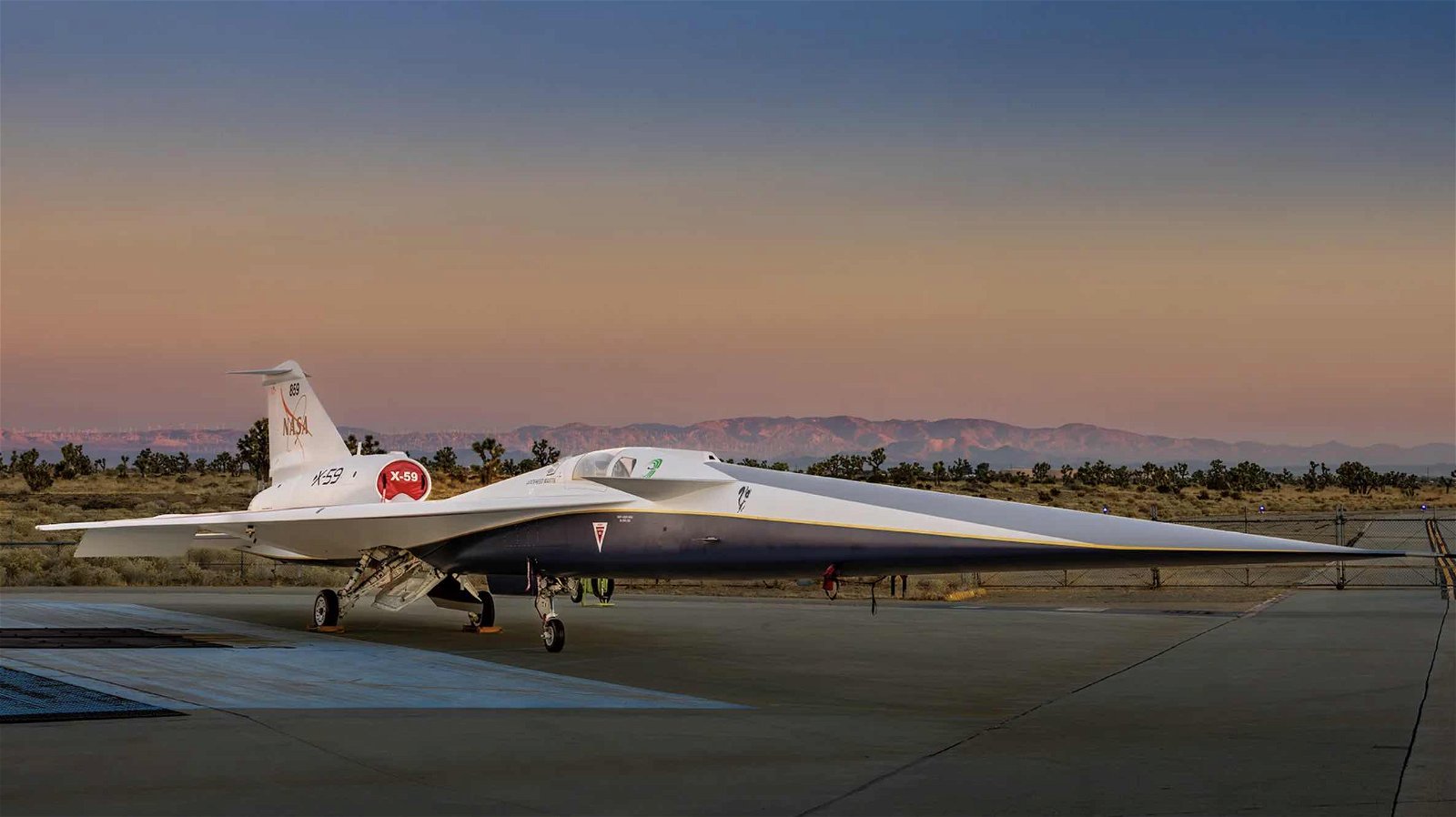On Friday, NASA and Lockheed Martin unveiled the X-59 quiet supersonic aircraft, a unique experimental plane that is set to revolutionize air travel by collecting crucial data that could lead to a new era of commercial airplanes capable of exceeding the speed of sound.
The rollout of the newly painted X-59 Quesst supersonic aircraft occurred at Lockheed Martin’s iconic Skunk Works facility in Palmdale, California, during an impressive ceremony that showcased the state-of-the-art supersonic aircraft.
Measuring 99.7 feet in length and 29.5 feet in width, the X-59 is designed to aid in the production of future quiet supersonic aircraft designs. Its futuristic-looking elongated nose, comprising nearly a third of the aircraft’s length, is a key technological feature that allows the aircraft to disrupt the shock waves that typically cause sonic booms that occur during supersonic flight.
The aircraft’s unique design also places its cockpit location midway along its length, with the noticeable absence of any forward-facing window. The Quesst team instead developed a series of high-resolution cameras linked to a 4K monitor in the cockpit, dubbed the eXternal Vision System, paired with a top-mounted engine and a smooth underside that all help the X-59 reduce sonic boom production
Speaking during Friday’s event in California, NASA Deputy Administrator Pam Melroy called the X-59 a testament to the dedication and innovation of NASA and its partners.
“In just a few short years we’ve gone from an ambitious concept to reality,” Melroy said on Friday. “NASA’s X-59 will help change the way we travel, bringing us closer together in much less time.”
The X-59 is central to NASA’s Quesst mission, which aims to provide insights into quieter supersonic travel that could rewrite existing regulations that prohibit supersonic flight by any commercial aircraft over land.
Existing regulations largely stem from flights of the Supersonic Transport Concorde aircraft decades ago, which was ultimately retired partly due to problems related to environmental restrictions on sonic booms produced by aircraft.
During Friday’s event, Bob Pearce, associate administrator for aeronautics research at NASA Headquarters, expressed excitement about the Quesst program’s ambitious goals.
“NASA will share the data and technology we generate from this one-of-a-kind mission with regulators and with industry,” Pearce said. “By demonstrating the possibility of quiet commercial supersonic travel over land, we seek to open new commercial markets for U.S. companies and benefit travelers around the world.”
Following the rollout, the Quesst team will focus on integrated systems testing, engine runs, and taxi testing for the X-59.
Later this year, the X-59 will make its inaugural flight following a series of test flights at Lockheed’s Skunk Works facility, after which it will be transferred to NASA’s Armstrong Flight Research Center in Edwards, California, for further operations.
After it undergoes testing, NASA will fly the X-59 over a select group of U.S. cities and gather feedback on the sound it produces, data that will later be provided to the Federal Aviation Administration and international regulators.
You can now watch the entire rollout ceremony, which occurred at Lockheed Martin’s Skunk Works facility, on NASA’s YouTube Channel.
Micah Hanks is the Editor-in-Chief and Co-Founder of The Debrief. He can be reached by email at micah@thedebrief.org. Follow his work at micahhanks.com and on X: @MicahHanks.

